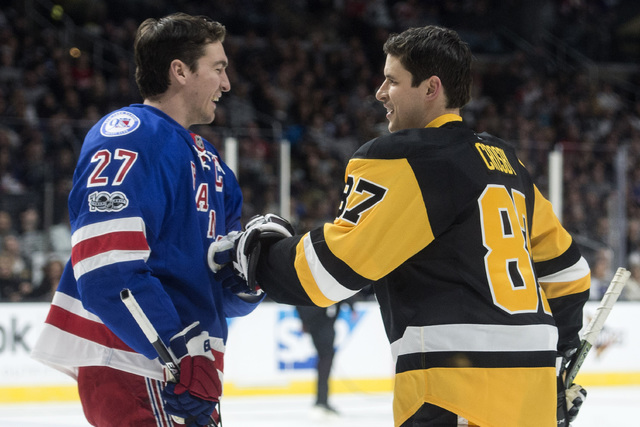Is link between concussions and brain damage as real in hockey as football?

LOS ANGELES
The idea was to again bring its stars to a place familiar with such popularity and fame, to blend the NHL’s best with the bright lights and entertainment bonanza of La La Land.
Not the movie, but the real city that destroys hopes and breaks hearts and yet somehow can discover a way to mix Snoop Dog with hockey.
But hidden amid all the glitz and glamour like a shot aimed at a goalie’s blind spot just above the pad, a dark shadow exists around the NHL as it stages All-Star weekend at Staples Center, and not just the fact it had Justin Bieber participate in a shootout before Saturday’s skills competition.
Now there’s a celebrity we wouldn’t mind see move to Canada, and he’d actually be going home.
The NHL continues to deny a link between repetitive head trauma and permanent brain injury, refusing to admit all those concussions suffered by players past and present have and can lead to things such as chronic traumatic encephalopathy (CTE), which you might have heard about a few thousands times as it relates to the NFL.
Any mention of CTE and professional sports is almost always followed by what lawsuits are either pending or resolved, and in the case of the NHL, more than 100 former players have brought a class-action case against the league.
Its premise is similar to the one fought in football: That the NHL failed to protect players from brain injuries or educate them about the long-term effects of constant head trauma.
It can be a costly position. The NFL settled its concussion lawsuit for $1 billion. More important, it has, albeit through more whispers and nods than shouting from the top of any stadium, admitted a link exists between such trauma and CTE, that things such as chronic headaches and massive mood swings and dementia and, yes, even suicides are results of all the head hits.
The NHL won’t.
The stars of today exist predictably down the middle of the issue, certainly not wanting to take an anti-league stance, even those who have dealt with serious concussion issues, as is the case with the world’s best player.
“I think there is so much awareness now about concussions,” Penguins captain Sidney Crosby said. “It’s a physical game. It’s a contact sport. I think players understand the difference between symptoms and playing through things isn’t necessarily going to help.
“The more we learn, the better I think everyone can come to understand how things work. I feel confident about things given the way that I have gone through the process. The word concussion is a hot topic, but at the same time, like any other injury, you just have to be patient, and when you come back, be ready to go.”
The league will tell you it has taken steps to better identify and treat concussions, that it has introduced new protocols that call for independent certified trainers to act as spotters during games, that if they have teams remove players from the ice and such orders are not followed, sanctions and fines can follow.
But much of that depends on players being honest about being hurt, and good luck finding many — especially during the playoffs — who will choose the truth over remaining in games. It’s true there are fewer fights now, that enforcers, while not totally endangered, are not nearly as prominent.
I don’t believe it’s a case of NHL officials hiding under any Zamboni, but more a matter of fighting the issue until the courts decide how much, if any, the league will owe those suing. But a USA Today report also found the NHL hasn’t paid a dime to any of the four centers leading research into neurodegenerative diseases, specific to the point of football and hockey players developing CTE.
Which pretty much proves the NHL is going to combat this thing no matter how much evidence is unearthed, to the point commissioner Gary Bettman answered a question from a U.S. senator about hockey injuries and CTE by writing that the link to concussions “remains nascent … The relationship between concussions and the asserted clinical symptoms of CTE remains unknown.”
“Player safety is something that is a priority to us and always has been,” Bettman said Saturday. “We spend a great deal of time and effort and money in making sure the game is as safe as possible based on the medical knowledge that is available at the time. I believe our players get the best treatment that can be given.”
Everything was all bright and cheery Saturday, when some of Hollywood’s biggest stars took part in All-Star festivities that act as a prelude to Sunday’s game, when Snoop Dog performed and The Biebs showed off his hockey skills and all was deemed right and prosperous.
Still, the dark shadow persists.
You might not see it, like a goalie missing that shot just above the pad, but it’s there.
The NHL would just prefer you not believe it.
Contact columnist Ed Graney at egraney@reviewjournal.com or 702-383-4618. He can be a heard on “Seat and Ed” on Fox Sports 1340 from 2 p.m. to 4 p.m. Monday through Friday. Follow @edgraney on Twitter.












